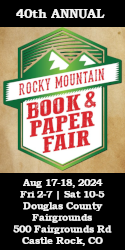Iraq Then and Now: A Bibliographical Essay
On the 29th of January, 1258, the Abbasid caliph Mustasim could look eastward over the walls of Baghdad and contemplate his place as the symbolic head of all Muslims throughout the world and the ruler of a vast city which was the focal point of Islamic learning and wealth. The next day that view suddenly changed as he beheld 100,000 Mongol warriors under the leadership of Hulagu, the grandson of Jenghiz Khan. Within 15 days, Mustasim, his court and over 99% of Baghdad’s population were dead and most of the city burned. Baghdad was transformed into a village of ruins and it would be almost seven centuries before it began to recover its place in history.
Over the following centuries few Westerners visited the Middle East which remained distant and hostile. Carsten Niebuhr, the Danish traveler, recorded a generally accurate description of what he observed during an epic journey to Arabia and Yemen between the years 1761 and 1767. Britain spawned several famous travelers who set forth to examine what lay beyond the relatively well-known areas of the Levant and Egypt. Swiss German by birth, Johann Ludwig (“John Lewis”) Burckhardt eventually migrated to England and went on to author five masterful accounts of his experiences but none of these included Mesopotamia. It remained for another Briton, James Silk Buckingham (1786-1855), to visit the land between the two waters which he described in his work, Travels in Mesopotamia (1827). In the eyes of many, however, Buckingham was a questionable figure, and Burckhardt in particular looked askance at Buckingham, about whom rumors of plagiarism abounded. Buckingham indeed seemed to crave publicity: Robin Bidwell’s book, Travellers in Arabia, includes a hilarious image of Buckingham “in the Costume worn on his Travels”. In it, Buckingham is shown astride a golden horse with a mane of curly locks and an almost human face. The Great Man himself is attired in a wildly colorful costume and armed with a lance, musket, pistol, dagger and sword. No doubt he also had a signet ring fitted with a concealed poison barb…
It remained for an extraordinary young man to begin serious exploration of Mesopotamia: Claudius James Rich (1787-1821). Before he was 19 years of age, Rich had mastered Latin, Greek, Hebrew, Syriac, Persian, Ottoman Turkish and Arabic.
By 1808, he was married and settled in Baghdad as the resident agent for the British East India Company. Whether due to boredom or inner curiosity, he began to explore the remains of Babylon, the results of which led to his first book, Memoir on the Ruins of Babylon (1815). He continued his work on Babylon, after a year’s stint back in Europe, and wrote Second Memoir on Babylon (1818). Around 1820, he began a long journey throughout northern Iraq into Kurdistan: afterwards setting off for Basra and ending up in Shiraz where he died of cholera at the age of 34 on October 5, 1821. Armed with his diaries, it was left to Rich’s wife, Mary Rich (nee Mackintosh) to edit and publish the most important of Rich’s works, Narrative of a Residence in Koordistan and on the site of Ancient Nineveh (1836), and Narrative of a Journey to the Site of Babylon in 1811 (1839).
James Baillie Fraser, who had apparently met Rich in Shiraz, wrote two accounts of Mesopotamia, Travels in Koordistan, Mesopotamia, etc. (1840) and, in 1842, Mesopotamia and Assyria. There can be little doubt that the writings of Rich and Fraser provided an enticement for another Briton to visit Mesopotamia – that man was Austen Henry Layard.
Layard began to explore the ruins in Nimrud and near Mosul in 1845 and his description of those finds formed the heart of his first book, Nineveh and its Remains (1849). His return to the area in 1849 resulted in a second book entitled Discoveries in the Ruins of Nineveh and Babylon (1853)
And that was essentially the end of it all. It was, moreover, the ancient Near East that drew people to Mesopotamia: of the modern world, there was little interest. There were some other expeditions to the area after Layard’s extraordinary discoveries but these were not particularly significant. Lady Ann Blunt traveled to the area and discussed her observations in Bedouin Tribes of the Euphrates (1879). W.F. Ainsworth ventured there and published A Personal Narrative of the Euphrates Expedition in 1888. Tristram Ellis traveled to Mesopotamia around 1880 and produced a lovely two-volume book with sublime etchings describing his experiences: On a Raft & Through the Desert (1881). Baghdad did not greatly impress Ellis and he estimated the population to be around 100,000, a fraction of its grandeur in 1258. That, moreover, was just about that for the Land between the Two Rivers.
If no one paid much attention to Iraq/Mesopotamia for seven centuries, that was all to change in 1914. World War One erupted and the world changed dramatically – whether for better or for worse is hard to tell.
By 1915, Britain was preparing for the Gallipoli campaign, encouraging the Arab Revolt and seeking to thrust a single (and doomed) division from Basra to Baghdad under General Townshend. Ironically, one of the chief purposes in moving toward Baghdad was to protect the oil fields – in Persia. Oil was not discovered in Iraq until 1927.
By the time the war ended in 1918, Britain had learned a great deal about Mesopotamia, now renamed Iraq and placed under British mandate in 1920 by the League of Nations. Edmund Candler wrote an outstanding account of the Mesopotamian campaign, The Long Road to Baghdad (1919). In more ways than one, Candler’s narrative was akin to today’s ‘embedded’ journalist. Formally described as an “official eye witness” to that enterprise, he found himself constantly at war with the high priests of censorship throughout the campaign. Early in his narrative, Candler wrote a scathing assessment of how British authorities tried and failed (with terrible consequences) to capture Baghdad with but a single division in 1915; i.e., ‘on the cheap’ (this somehow sounds familiar…). In that passage, Candler declared “Ignorance was at the root of the evil rather than callousness or indifference. For the system could not be purged in a day, or the habit of mind that grows out of it – a habit that is as content with the image of things as with the substance, that is always weighing and appraising, suspecting, doubting, evading responsibility and consigning live issues to the slow death of compromise.” Later, he mocks the censors, noting how he could not discuss the presence of ‘friendly Arabs’ since readers in London might infer (correctly!) that some were unfriendly. Instead of commenting on the penchant of the Bedouins to kill the British wounded before stripping them of their clothes (which embarrassed the Ottomans and infuriated British forces), Candler found himself forced to describe these marauders as “Kurds and others.” (“Others”? Candler’s blood was probably boiling when compelled to draft this nonsense. Today we can at least blame the Iranians…or the French).
Baghdad eventually became a haven for the best and brightest Arab/Middle East scholars Britain had to offer – and there were many by 1920. T.E. Lawrence was on the fringes but others were in the heart of the matter: Sir Arnold Wilson, Gertrude Bell, G.E. Leachman, H.R.P. Dickson, Jack Philby, Ronald Storr, E. B. Soane, Edward Noel, C.J. Edmonds, Aubrey Herbert,…the list goes on. Many were outstanding students of the Middle East and wrote highly influential books on that area thanks to their command of Arabic, Persian, Ottoman Turkish and even Kurdish.
There was an increase in the number of books written about Iraq as those involved with it during the Great War began to recount their experiences. Sir Arnold Wilson, already a scholar in matters relating to Iran, wrote a massive two-volume account of his experiences in Iraq: Loyalties Mesopotamia, 1914-1917 and Mesopotamia, 1917-1920: A Clash of Loyalties (Oxford, 1930). Gertrude Bell’s works, though classified during the war, were critical: The Arab of Mesopotamia (1918) and The Arab War (1940). C.J. Edmonds produced an elegant description of his time in Iraq with his Kurds, Turks and Arabs (1957).
It was a non-scholar, however, who helped begin a greater interest in Iraq, Dame Freya Stark, whose first book was entitled Baghdad Sketches (1932). Much of her later work, on the other hand, dwelt with other parts of the Middle East, especially Persia (Iran), Arabia proper, Turkey and Syria. Stark’s favorite subject, moreover, tended to be herself and she made an extensive career in collating her own correspondence for publication by John Murray of London.
After 1950, studies of Iraq were few and far between. Both Stephen Longrigg and George Harris wrote about Iraq (and by that I mean going beyond the subject of oil). It was Majid Khadduri, on the other hand, who devoted considerable attention to his former homeland. Three of his most scholarly books dwelt on Iraq: Independent Iraq (1951), Republican Iraq (1969) and Socialist Iraq (1978). His academic credentials notwithstanding, Khadduri showed a sense of delicacy in his writing which carefully excluded unpleasant events. In Socialist Iraq, the summary execution of the Iraqi King and his family (mostly women) in 1958 is simply described as “the fall of the Monarchy.” The torture and execution of Prime Minister Nuri al-Sa’id, whose body was then dragged around Baghdad behind a car, is left untouched. Khadduri was also clearly impressed by Saddam Husayn (Hussein) and wrote of his “prudence, flexibility and resourcefulness”, adding further that “These qualities, combined with integrity and high moral courage, are his Party’s best promise for the country’s future leadership.” Well, so much for the Butcher of Baghdad…
It was another Iraqi, however, who compiled an extraordinary study of modern Iraq, Hanna Batatu. In 1978, he published his magnum opus, The Old Social Classes and the Revolutionary Movements in Iraq: A Study of Iraq’s Old Landed and Commercial Classes and of its Communists, Ba’thists and Free Officers. Batatu spent years compiling his data in a work which is so filled with facts and names as to be best used as a reference work rather than a pleasant evening’s read. Unlike Khadduri, moreover, he is candid about the horrors of Iraq during the 1960’s and 1970’s: the torture chambers, the merciless slaughter of innocents and the general passion for violence which then – and now – permeated Iraqi society.
The darkness of Iraqi society was once more exposed in a remarkable book by Kanan Makiya (then writing as Samir al-Khalil), the Republic of Fear (1989). It was a brave book to write since the regime in Baghdad was not shy about orchestrating assassinations abroad, usually in a sufficiently gruesome manner (axes, knives, etc.) as to dissuade dissidents from speaking too loudly – or at all. In a former career, I served in the U.S. embassy in Baghdad and departed in 1990. My successor was declared persona non grata in 1990 because the Iraqi ambassador to the UN had been expelled: the FBI had caught him trying to arrange for an assassin to murder a dissident in the U.S. The diplomacy of the deed, indeed.
Since 1991, scores of books have emerged about Iraq and that number has increased several-fold since 2003. No doubt some are good while others are wanting. Still, the literature is important and may allow many in the West (and East) a better grasp of what makes life (and bombs) tick in Iraq. Too bad that literature was not around before 2003…
I have no doubt that I have missed or overlooked some excellent studies of Iraq but the titles noted above provide some background information for people who are (or should be) interested in the region and its history. The more one learns, the more one is confounded by one’s ignorance: that is clearly true for me. And that is why learning is such an endless pleasure.
Michael M. Pixley served for 22 years as a Foreign Service Officer in the U.S. Department of State, with 17 of those years overseas, primarily in Turkey and Iraq. He began his modest second career as a bookseller in 1999 (Eastern Approaches Books), specializing in the Middle East. He lives in Annapolis, MD

























